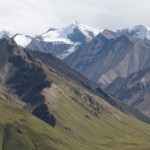It seems like everyone is at the AGU currently, and even the German media is full of geoscience news. The first really interesting thing that I came across was that hurricanes might trigger strong earthquakes. If Shimon Wdowinski from University of Miami is right, this would be a huge step forward for our earthquake understanding. If he should be right.
Posts in the category » « ( 91 Posts )
-
What’s up? The Friday links (25)
2011-12-09 | in The Friday Links -
SSA 2012 Special Session: Earthquakes and Tsunamis at Coastal Archaeological Sites
2011-11-15 | in Uncategorized | 2 responsesDear colleagues,
We would like to bring your attention to a special session at the 2012 Annual Meeting of the Seismological Society of America (17-19 April, 2012, San Diego, California):”Earthquakes and Tsunamis at Coastal Archaeological Sites”.
-
SSA 2012 Special Session: Macroseismic Effects in Recent and Ancient Earthquakes and their Relationship to Ground Motion Parameters
| in UncategorizedDear colleagues,
We would like to bring your attention to a special session at the 2012 Annual Meeting of the Seismological Society of America (17-19 April, 2012, San Diego, California): “Macroseismic Effects in Recent and Ancient Earthquakes and their Relationship to Ground Motion Parameters”. more
-
M5.6 earthquake in Oklahoma
2011-11-06 | in EarthquakeA series of earthquakes has hit Oklahoma, with a M5.6 being the strongest one. The main quake was preceeded by a M4.8 and several smaller ones. A number of aftershocks took place, some of them stronger than M3.0. The epicentre was situated close to Prague about 50 km west of Oklahoma City. All quakes occured in very shallow depth (< 10 km). No injuries have been reported so far, but it seems that some minor damage occured. Quakes of this strength can be felt over hundreds of kilometers in central and eastern US.
-
What’s up? The Friday links (20)
2011-10-28 | in The Friday LinksThe Turkey M7.2 earthquake turned out to be a really desastrous event. More than 500 people died, more than 2,000 houses were destroyed. Currently, international aid is reaching the epicentral area. Chris Rowan has a good article on the geological background (an earlier one here), History of Geology discusses the paleoseismicity of that region. The German Aerospace Agency (DLR) prepared some quick response maps for the Van and Ercis areas. Nice work!
-
What’s up? The Friday links (19)
2011-10-21 | in The Friday LinksLet’s start with some good news: The first two Galileo satellites (Natalia and Thijs) will be launched today from Kourou. It’s a little behind the schedule (6 years) and the entire project has become a little more expensive than previously thought (1,600,000,000 €), but who cares? It will provide 1 m GPS resolution! 1 m!!!
There is one more Archaeopteryx! Really! Soemone who does not want his name to be told handed out the fossil to scientists. After a thoroughly investigation of that great piece of Solnhofen Plattenkalk, the anonymous collector will get back his bird. No, his dinosaur I mean. Ehm, his Archaeopteryx.
Dave Petley reported on a giant landslide in Iceland. It’s expected to have ~1,000,000 m³. See the amazing images, just great.
-
The Wednesday Centerfault (8) – Virginia M5.8 Earthquake
2011-08-24 | in Centerfault | one responseYesterday, a magnitude 5.8 earthquake happened near Mineral, Virginia in a depth of 6 km only (37.936°N, 77.933°W) with a thrust faulting mechanism. Media report that the quake was felt as far as Boston and even Canada to the north, but significantly less far away in southern direction. The US East Coast quakes are normally felt in a wide range, since the crust there is old, cold and dense which makes it easy for the seismic waves to propagate. Some damage occurred at the epicentral area, but apparently there were no fatalities. From the earthquake effects (Chimneys collapsed, walls cracked, some springs showed changes) and instrumental measurements an epicentral intensity of VII can be determined. more
-
What’s up? The Friday links (18)
2011-08-05 | in The Friday LinksEarthquake prediction again: The former president of India, Abdul Kalam, said earthquake prediction will be possible within 10 years. It would be great if he was right, but he isn’t. Why do people continue to say that? There are so many that “predict” earthquakes, and so many people relying on them. What a pity… more
-
SSA meeting: Special session on Japan, Christchurch EQs
2011-03-16 | in Japan EarthquakeThe Seismological Society of America has re-opened abstract submission for a special session on the Christchurch and Japan earthquakes during the Memphis conference. Deadline for new abstracts on this topic is 25 March.
The Seismological Society of America‘s annual meeting 2011 will take place in Memphis, Tennessee from 13 – 15 April. A special focus is set on the New Madrid earthquakes, so paleoseismologists will definitely hear some interesting sessions there. Post meeting excursions are scheduled 16 April. For more information visit the official website.
-
Job Openings: Five research geologists, tectonics for USGS Alaska
2011-01-27 | in Uncategorized The Alaska Science Center is advertising five new permanent research geologist positions. Applications are open between December 1, 2010 and February 15, 2011, and that selection will occur during late spring of 2011. More information on their homepage, including the following announcement:
The Alaska Science Center is advertising five new permanent research geologist positions. Applications are open between December 1, 2010 and February 15, 2011, and that selection will occur during late spring of 2011. More information on their homepage, including the following announcement:“This hiring initiative inaugurates a team approach to geologic research in Alaska (Photo gallery). The five positions will together make up a working group that will respond to the USGS’ ongoing need for research in framework geology of the 49th state. Project work is expected to support a broad range of research topics related to crustal evolution and surficial processes. We expect projects will involve collaboration with researchers from other USGS offices, federal agencies, state agencies, and academia.
more
